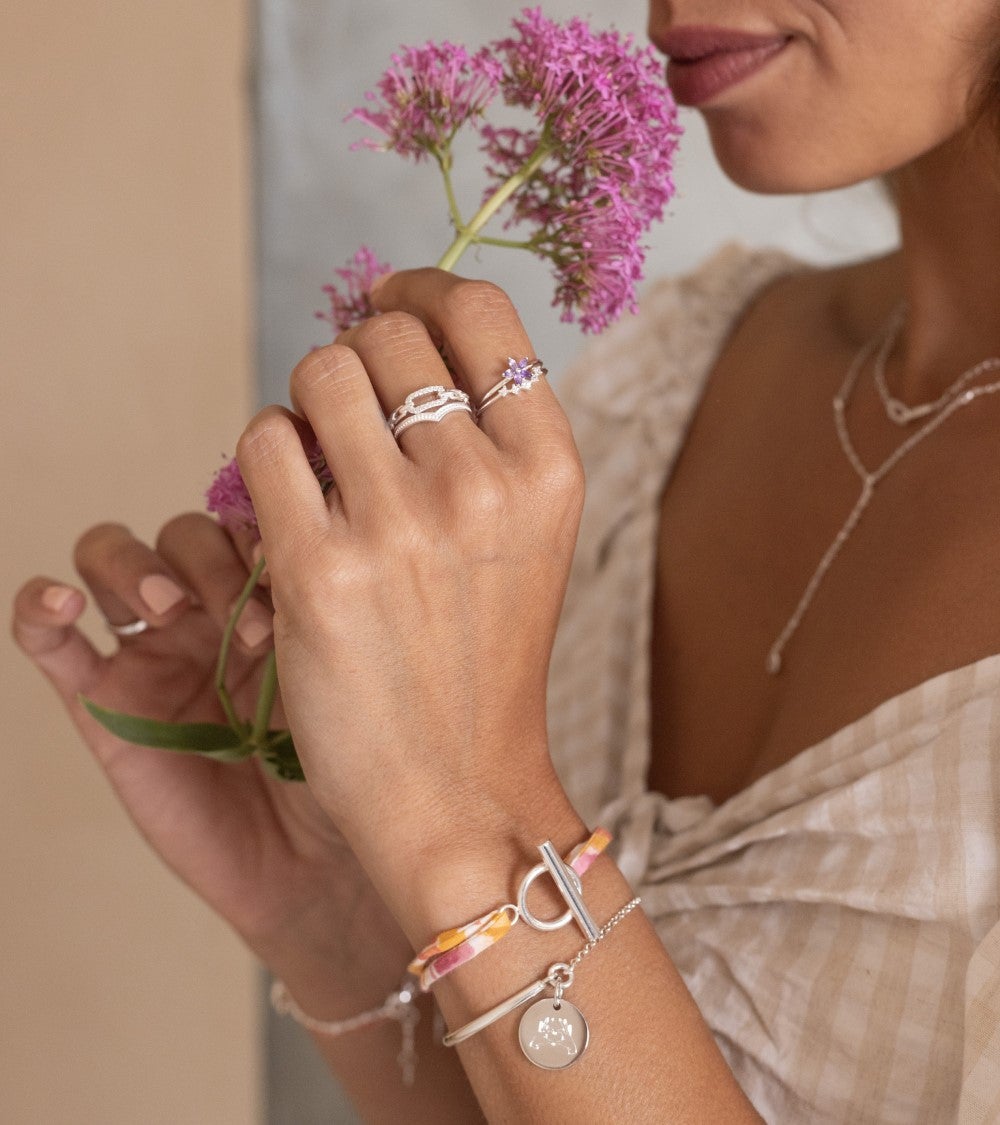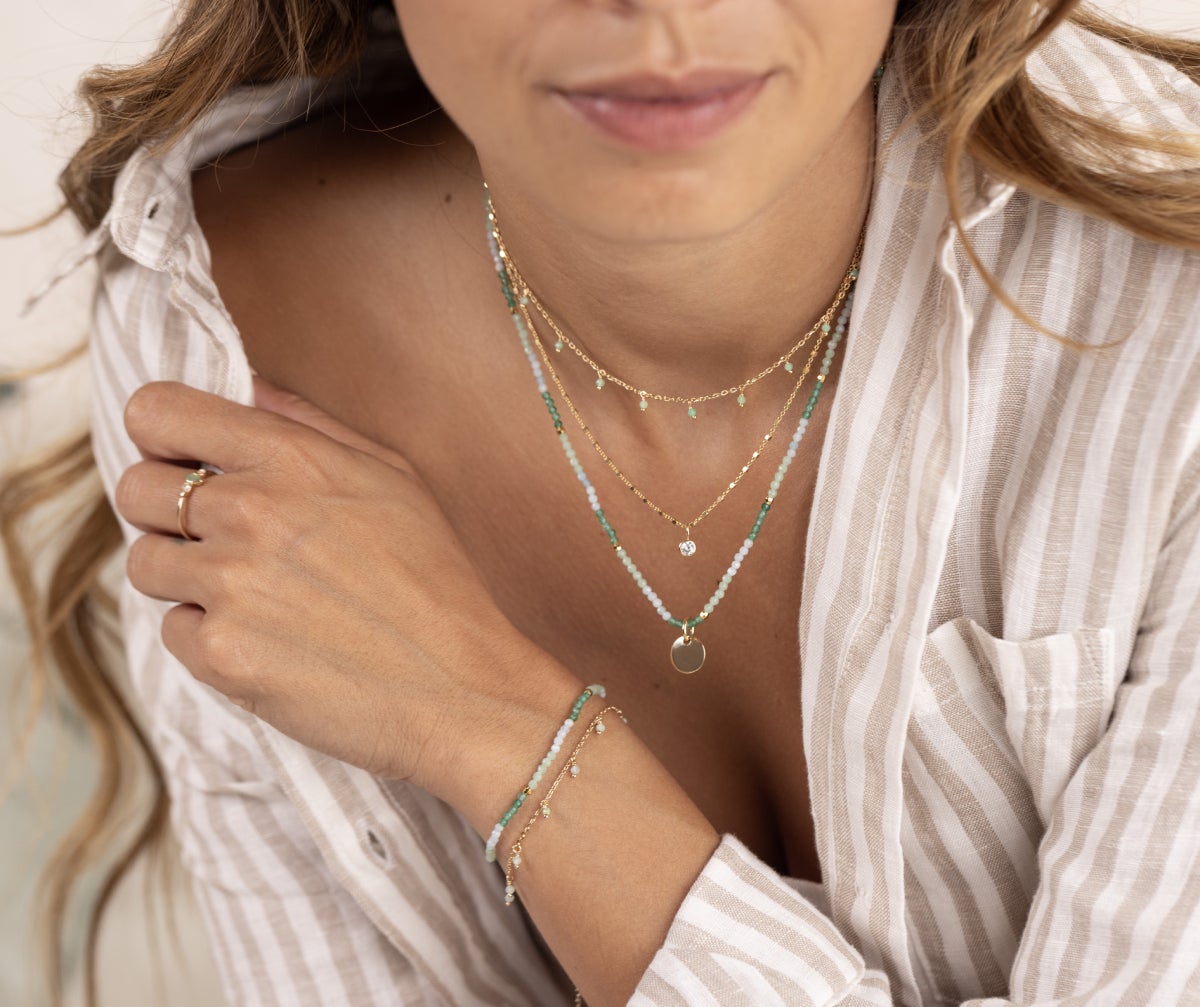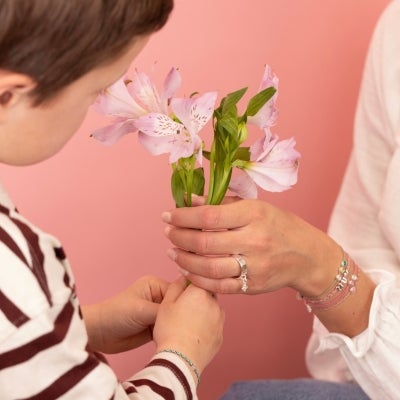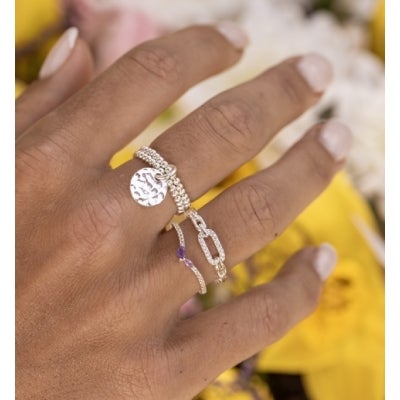To ensure that your jewellery lasts over time, there are a few precautions you should take. There are simple techniques for cleaning them, whether they are 925 silver, gold-plated or rose gold-plated. This article is sure to help!
How to clean silver jewellery?
925 Silver jewellery lasts well over time, but it can sometimes tarnish. In general, it's not jewellery that's worn regularly that loses its shine, but rather jewellery that's worn less often or left in its jewellery box for a while. But don't worry, nothing is lost! 925 silver jewellery can be cleaned quite easily, restoring its shine.
The most effective way to clean your silver jewellery is to use a special product like Miror silver cleaner. Simply pour a small amount onto a soft cloth and gently rub your jewellery. Rinse with cold water, then wipe with a dry cloth, and your jewellery will be as good as new!


You can also go natural: you can clean your 925 silver jewellery with bicarbonate of soda. The technique is quick and easy:
In a container, mix some bicarbonate of soda with warm water: you should obtain a sort of paste. Apply this natural paste to the jewellery you want to clean, then leave it on for a while. If you don't have any baking soda, you can always use toothpaste, which works just as well. Next, gently rub your jewellery with a microfibre cloth or paper towel. Finally, rinse your jewellery in cold water and dry it with a soft cloth. And voilà: your jewellery will shine like new!
Good to know: for areas of the jewellery that are more difficult to clean, you can use a toothbrush instead of a cloth. But be careful: use a toothbrush with soft bristles, as hard bristles could cause scratches.
How to clean gold-plated jewellery?
To clean your gold-plated jewellery, simply use soapy water and a soft cloth. It couldn't be simpler!
Note that gold-plated jewellery is more fragile than silver jewellery, due to the thin layer of gold that covers it, which can flake off. So it's a good idea to keep them separate in your jewellery box, to avoid them getting tangled up and damaged.
Remember, too, that to make your jewellery last over time, we advise you to remove it during your sports sessions or when you come into contact with strong products such as chlorine in a swimming pool or household products. When you wear perfume, be careful not to get any on your jewellery. This advice also applies to silver jewellery.


Earrings, rings, bracelets, necklaces: is there a specific cleaning routine for each type of jewellery?
The cleaning tips mentioned above, whether using a cleaning product, bicarbonate of soda or simply soap, work for all types of jewellery: bracelets, necklaces, rings and earrings. But of course, some parts of the jewellery will get dirty more quickly:
For rings and bracelets, the inside, which is in contact with the skin.
For necklaces, the clasp that you handle or the friction points between the pendant and the bottom of the chain.
For earrings, this will be the stem and the side of the push button that touches the ear.
You need to be more careful with earrings and piercings than with other items of jewellery, as there is always a risk of infection. After purchase, it is advisable to clean your earrings with alcohol or antiseptic lotion before wearing them for the first time.
Our jewel polishing cloth is also ideal for reviving the shine of jewellery that has become dulled by everyday wear and tear. For new medals, we recommend using a softer, finer cloth to avoid creating micro-scratches. Care for your jewellery quickly and easily by rubbing it gently with our cotton jewel polishing cloth. It is impregnated with cleaning product, so there's no need to add any more to maintain your jewellery. Please note: to maintain the cleaning effectiveness of the jewel polishing cloth, it must not be washed.
Did you find this article useful? If you have any questions about your L'Atelier d'Amaya jewellery, don't hesitate to contact our customer service department! You can also find out about our jewellery piercing service.









